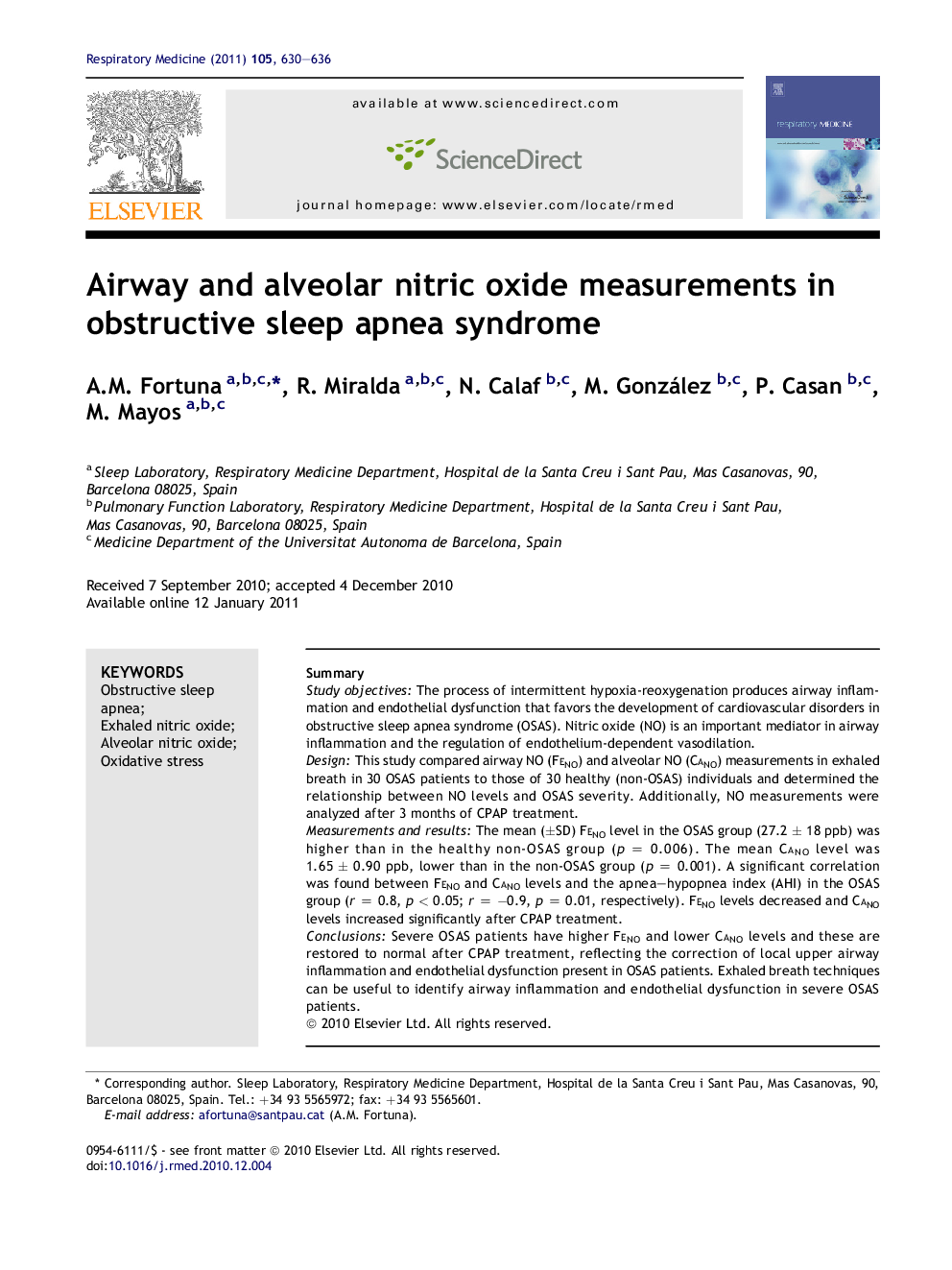| Article ID | Journal | Published Year | Pages | File Type |
|---|---|---|---|---|
| 4211358 | Respiratory Medicine | 2011 | 7 Pages |
SummaryStudy objectivesThe process of intermittent hypoxia-reoxygenation produces airway inflammation and endothelial dysfunction that favors the development of cardiovascular disorders in obstructive sleep apnea syndrome (OSAS). Nitric oxide (NO) is an important mediator in airway inflammation and the regulation of endothelium-dependent vasodilation.DesignThis study compared airway NO (FeNO) and alveolar NO (CaNO) measurements in exhaled breath in 30 OSAS patients to those of 30 healthy (non-OSAS) individuals and determined the relationship between NO levels and OSAS severity. Additionally, NO measurements were analyzed after 3 months of CPAP treatment.Measurements and resultsThe mean (±SD) FeNO level in the OSAS group (27.2 ± 18 ppb) was higher than in the healthy non-OSAS group (p = 0.006). The mean CaNO level was 1.65 ± 0.90 ppb, lower than in the non-OSAS group (p = 0.001). A significant correlation was found between FeNO and CaNO levels and the apnea–hypopnea index (AHI) in the OSAS group (r = 0.8, p < 0.05; r = −0.9, p = 0.01, respectively). FeNO levels decreased and CaNO levels increased significantly after CPAP treatment.ConclusionsSevere OSAS patients have higher FeNO and lower CaNO levels and these are restored to normal after CPAP treatment, reflecting the correction of local upper airway inflammation and endothelial dysfunction present in OSAS patients. Exhaled breath techniques can be useful to identify airway inflammation and endothelial dysfunction in severe OSAS patients.
